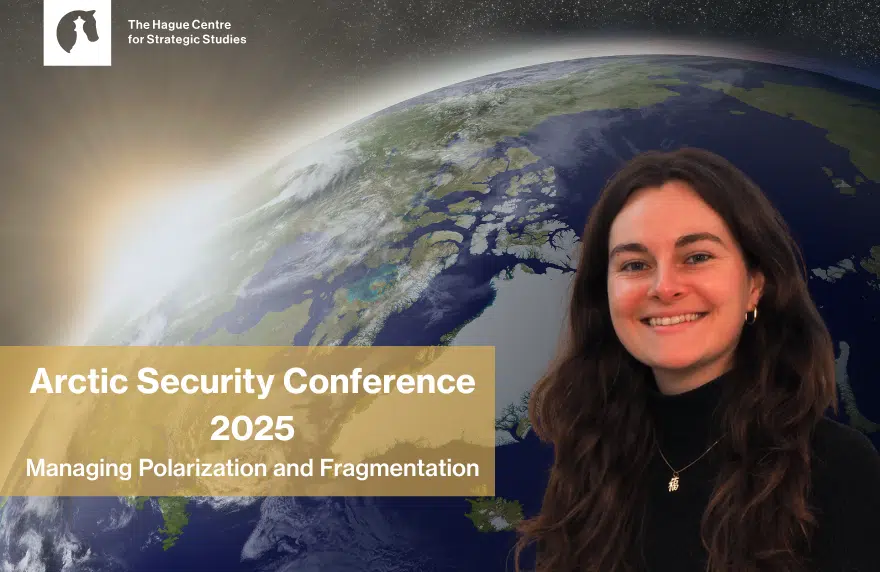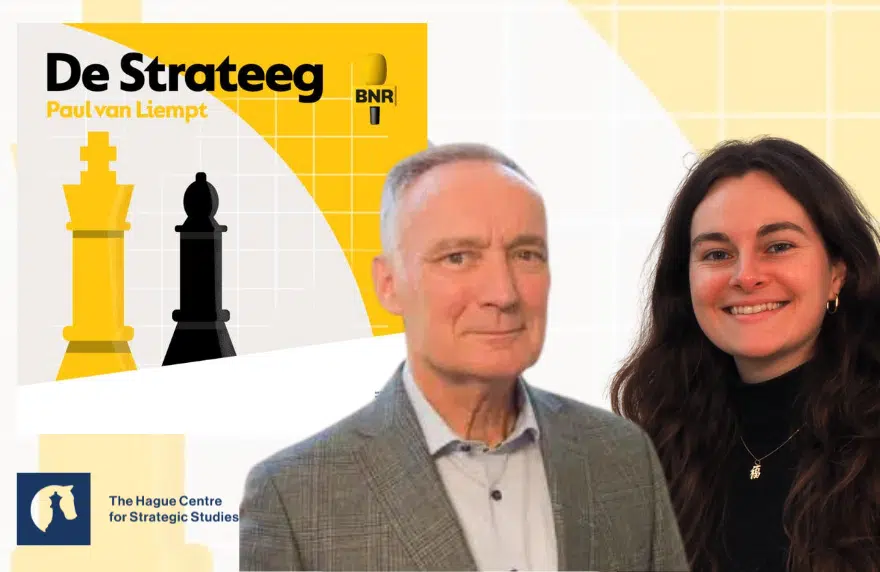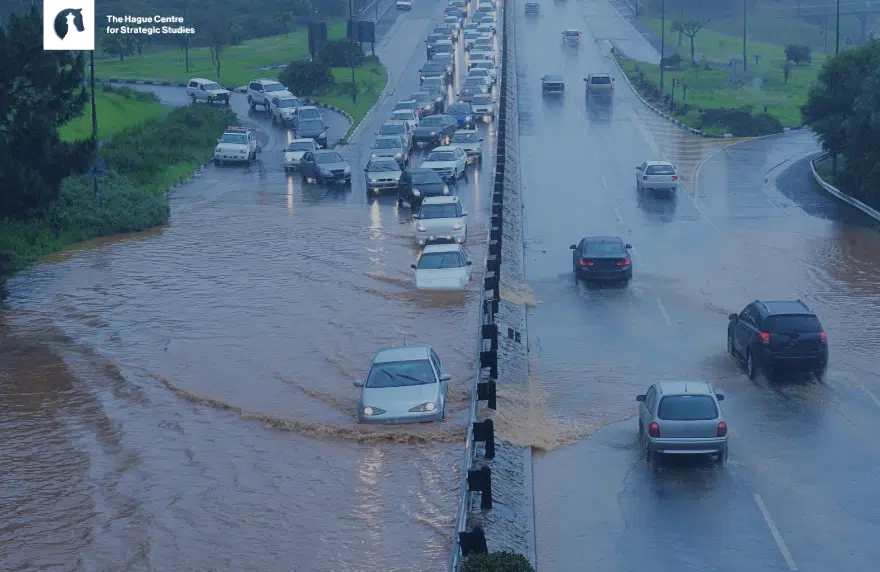Reflecting on the 2025 Arctic Security Conference
In September, Strategic Analyst Fiona De Cuyper attended the 2025 Arctic Security Conference in Oslo, Norway. The event brought together a diverse group of global participants, including academics, government and business representatives, Indigenous peoples, and locals from northern communities.
This year, the central theme of the conference was “Managing Polarisation and Fragmentation”, with sessions focused on great power competition in the High North, the relevance of Arctic cooperative institutions, the state of conflict in the region, the local aspect of security considerations, and the role of non-Arctic states.
The conference featured many notable speakers, including Espen Barth Eide (Norwegian Minister of Foreign Affairs), Eirik Kristoffersen (Norwegian Chief of Defence), Michael Sfraga (Former US Ambassador-at-Large for Arctic Affairs), Jennifer Spence (Director of Harvard University’s Arctic Initiative), Anthony L. Russel (Executive Director of the Center for Arctic Study and Policy at the U.S. Coast Guard Academy), and Viktorija Rusinaitė (Director of Research and Analysis at the European Centre of Excellence for Countering Hybrid Threats). For a full list of speakers and sessions, the programme of the conference can be found here.
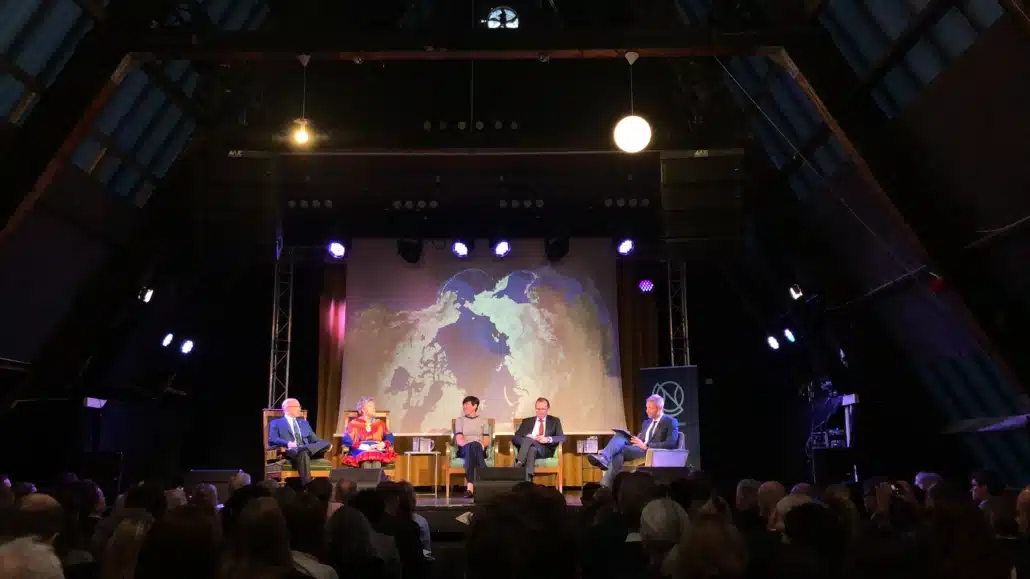
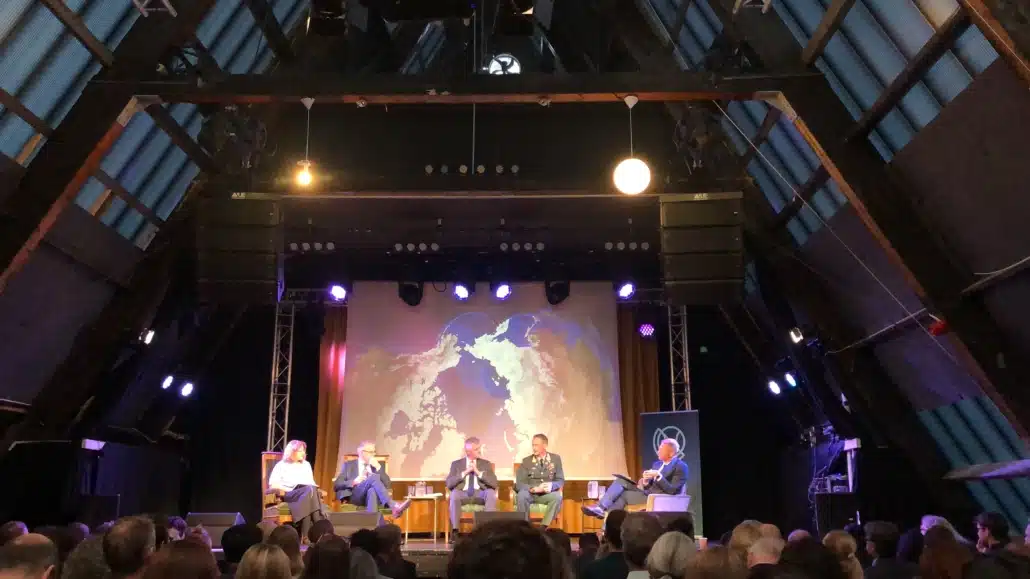
Reflection
If one thing was made clear at the 2025 Arctic Security Conference, it is that the High North can no longer be considered isolated from the rest of the world. While conflicts might not start in the Arctic, the region is deeply connected to global security and could easily be pulled into broader tensions. Encompassing the shortest route to send missiles between the United States, Europe, and Russia, the Arctic constituted an important theatre of great power rivalry during the Cold War. While the Arctic was not the source of conflict, it became a gateway for nuclear forces, air routes, and early-warning systems.
This legacy is now informing present-day dynamics. Russia has been revitalising and expanding many Soviet-era bases in the region, reopened Arctic facilities, and extended the presence of the Northern Fleet. Meanwhile, Denmark (incl. Greenland) has pledged up to 14.6 billion DKK (€1.96 billion) for increased Arctic defence, and Canada is investing 6.7 billion CAD (€4.12 billion) in critical northern infrastructure, an Arctic over-the-horizon radar system (in partnership with Australia), and to support a year-round Arctic military presence. The other Nordic countries, now all part of NATO, are also increasing their defence spending with an eye on the Arctic. For instance, Norway launched a new Arctic brigade in August 2025, and is set to increase its defence spending by 37% by 2036.
The invisible front
A major focus of this year’s discussions was on hybrid threats – from disinformation and cyberattacks to the subtle use of influence in remote communities. One speaker put it bluntly: “We are already at war in the Arctic”. Not in the sense of an open, kinetic conflict, but through ongoing pressure, competition and covert attempts to polarise northern communities and shape the future of the region.
Memory politics are key in Russia’s hybrid activities in the North. By leveraging historical narratives, war commemorations, and symbols, Russia seeks to assert influence and legitimise its presence and actions elsewhere. It erected monuments to commemorate Soviet soldiers in Northern Norway, and patriotic memorial tours have been organised across the Norwegian-Russian borderland. Over time, Russia has increasingly exploited the Russian-Norwegian tradition of joint war remembrance by greatly expanding the number of memorial objects and events. The Russian Orthodox Church has played a central role in this effort, helping to “naturalise” new monuments, such as Pomor crosses in Eastern Finnmark – placed in the vicinity of Norwegian military radar facilities, by invoking shared cultural and spiritual heritage. Since the 2022 invasion of Ukraine, these symbolic activities have notably intensified, with more assertive and at times unauthorised memorial events across the Norwegian North, including Victory Day parades in Svalbard.
A newer and perhaps less “usual suspect” in the regional hybrid threat realm is the United States. Recent reports revealed that the US has been engaging in influence operations across Greenland to deteriorate its ties with Denmark. Investigations showed that individuals close to US President Trump made frequent visits to the self-governing island, compiling lists of Trump critics and sympathisers, with the latter seen as potential recruits to form a “secession movement”. Others sought to establish connections with Greenlandic residents and business and political elites to “infiltrate” local society and further undermine relations with Denmark while promoting US involvement. This is alarming in many ways, not least because the US is now actively targeting its own ally and fellow NATO founding member, Denmark. Results from the 2025 Canadian Arctic Survey even show that Canadian northerners now view the United States as the number one threat to the region (37%), closely followed by Russia (35%), and China as a distant third (17.1%). These findings indicate a notable shift in regional threat perceptions and reflect growing concerns about the assertive behaviour of the US.
Going global
Throughout the conference, the growing global interest in the High North was evident. With seven of the eight Arctic states now being NATO members, the region is becoming ever more important in the Alliance’s strategic considerations – not least because NATO’s border with Russia now doubled. Meanwhile, the conference was characterised by a strong representation of (new) non-Arctic actors, like Qatar and especially India. The Indian Council of World Affairs was a partner organisation of the conference, and no less than four Indian panellists took the floor during the two-day event. This demonstrates that regional Arctic developments are felt far beyond the Arctic Circle and are sparking urgency on a global scale.
Nevertheless, there was a notable lack of Chinese presence at the conference. While they continue to engage with Russia in the Arctic, their attention seems to be shifting more towards the “Third Pole” (the Tibetan Plateau and the Himalayas). In recent years, China’s outreach to other Arctic states has been increasingly met with a cold shoulder. These states have grown more suspicious of China’s potentially dual-use activities in the region, resulting in only a fraction of proposed investments being materialised. This has decreased yet concentrated China’s engagement in the region, forming what appears to be a “dynamic duo” with Russia, one that is increasingly militarised and opportunistic. Nevertheless, the “dynamic” nature of this partnership calls for nuance: Russia has been sceptical of Chinese Arctic Council observership from the start and given the immense importance of the region for its domestic economy, Russia is unlikely to let China grow too powerful. Simultaneously, China sees itself as an economic power and wants to avoid getting entangled in the Western sanctions web should it get too close to Russia.
What about Russia?
Since Russia’s full-scale invasion of Ukraine in 2022, Russians have been glaringly absent from Western-organised Arctic conferences. Still, some panellists reflected on their perspectives. At recent Russian-led Arctic conferences, Russian President Putin denounced Trump’s plans to annex Greenland and called for continued cooperation – referring to the region as a space for dialogue (the International Arctic Forum 2025, held in Murmansk, was aptly titled “Arctic: Territory of Dialogue”). He lamented the halt in Arctic Council operations, and considers Russia a dominant yet responsible Arctic power, calling for equitable cooperation with both Arctic states and any other interested stakeholders. This sentiment was also expressed by the Indian panellists in Oslo, who proposed that India, given their neutral stance, could serve as a bridge between Russia and the other Arctic states.
That being said, several speakers pointed to the reality of ongoing regional cooperation with Russia on essential, often technical matters. Three northern Norwegian ports remain open to Russian fishing vessels, and they continue to engage to ensure the long-term viability of fish stocks in the Barents Sea. The Norwegian Joint Headquarters has also kept open the direct line to Russia’s Northern Fleet to avert potential crisis situations and to resolve fisheries issues. Several working groups in the Arctic Council still include Russian participants, particularly in operational areas related to search-and-rescue and oil pollution preparedness and response.
Local communities at the core
At the same time, participants emphasised that local voices must play a stronger role in shaping Arctic governance and security. Communities on the ground hold vital knowledge about the realities of living and operating in the North, which is less of a daily reality for the policy-makers in the remote capitals of Arctic states. These communities are the primary targets of hybrid threat activities and their perspectives are essential in creating effective and durable security solutions.
However, one panellist cautioned that community involvement and the integration of Indigenous knowledge is not a one-size-fits-all endeavour in the Arctic. Perspectives on hard security vary among Indigenous and non-Indigenous communities, with the former considering food security, housing, and reliable infrastructure as key hard security components. Different communities also grapple with different challenges and contexts. This reminds of an old truism: “There is not one but many Arctics”: the realities of the industrialised Nordic communities are very different from the remote settlements in Arctic Canada, for instance. The same holds true for security challenges: the Nordic countries are in Russia’s vicinity, with Norway and Finland sharing direct land borders with Russia while the North American Arctic is relatively more distant.
Discussions throughout the event pointed towards a mix of strategies to make the Arctic 7 more resilient, including stronger deterrence (“peace through strength”), smarter governance, improved civilian and military infrastructure, and education of the citizenry to strengthen critical thinking.
The end of Arctic exceptionalism?
Climate and scientific cooperation once formed the heart of Arctic engagement, these issues are now increasingly overshadowed by hard security considerations. Hybrid threats, military build-up, and extractive activities have become part of the once pristine Arctic landscape – and for the time being, it seems like there is no going back.

